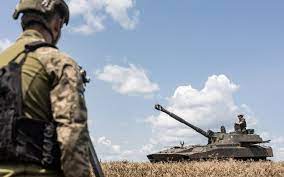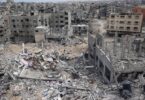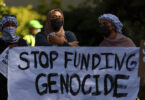Robert Clark
This week marked an inflection point in the Ukrainian counteroffensive, and perhaps the war. As Ukrainian troops appear to have broken through the first line of Russia’s heavily fortified defences in the south and east of the country, the possible road to Crimea has come into sight. Ukraine must now exploit this early breach if it is to sever the land bridge that connects the Russian mainland with Crimea. To do this will mean a hard fight to reach the sea, recapturing the key Russian-held towns of Tomak and Melitopol in the process.
Just to penetrate the initial Russian fortifications has been a painstaking process, as brave Ukrainian sappers have navigated some of the most heavily mined ground in the world. The Russian minefields are covered by tank traps, air power and mass artillery. On average, it is assessed that each square kilometre of this land is laced with 1,500 anti-personnel and anti-tank mines. Once clear of these, the first of three stages of Russian trench networks run several kilometres deep, where some of Russia’s best fighters are stationed to ensure that the Ukrainian assaults fail. Ukrainian reports have confirmed the minefields and forward defences around the village of Robotyne, south of Orikhiv in the Zaporizhzhia oblast, have just been successfully navigated by Ukraine’s 47th Mechanised Brigade.
If the defences around Robotyne are defeated, then the Russian-garrisoned town of Tomak lies within sight, less than 30 kilometres away. Several more defensive lines lie between Robotyne and Tomak, but these are likely far less heavily guarded than the initial ones the Ukrainians have pushed through. All of a sudden, Russia’s prized land bridge is looking extremely vulnerable to a massed Ukrainian mechanised exploitation, made even more deadly with the arrival of the American-supplied Abrams tanks by September.
This may all be promising, but time – that most unforgiving of battlefield considerations – is sadly not with the stoic Ukrainians. The next phase of the counteroffensive, the swift recapture of ground across Zaporizhzhia and Melitopol oblasts, will involve many weeks of hard fighting. However, the infamous Ukrainian “rasputitsa”, or “mud season”, will soon be upon us, as the torrential rains and flash floods of high summer turn the ground in eastern Ukraine into a marshy bog, making offensive armoured manoeuvres and assaults difficult and slow-going. These were the conditions facing Napoleon’s troops in their early-19th-century invasion of Russia, and Hitler’s advance on Moscow in autumn 1941, which ultimately proved disastrous for both attacking armies. Now on home soil, the Ukrainians will, by autumn, have to deal with this enemy in addition to the Russian invaders.
Ukraine will be left with little choice but to double-down during the harsh winter months and make swift armoured advances across the frozen ground as the Russian conscripts freeze in their static trenches. By spring, the rasputitsa will be back. This will likely be the end of the counteroffensive phase. With forthcoming elections across the West likely to absorb political capital, and war fatigue expected to kick in, Ukraine may only have a few short, precious months to recapture as much ground as swiftly as possible. Diplomatic pressure for Ukraine to accept some form of peace will mount next year, which will please a rearming Russia and its Chinese sponsors intent on a frozen conflict. Ukrainian control of Melitopol and the Azov Sea will leave Kyiv in a far stronger position if it is to deal with international pressure next year. We must now ensure that the Ukrainian fighting forces have everything that they need – and, crucially, expedite everything that we have already promised.







